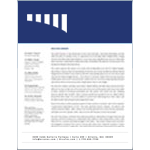
U.S. Economic News
December 19, 2018
U.S. Economic Indicators
Existing home sales increased 1.9% to a seasonally adjusted annual rate of 5.32 million in November, but are 7.0% below year-ago levels. NAR notes that despite home sales being down significantly from a year ago, home sales are stabilizing as rising inventory tames home price appreciation. NAR Report
U.S. News
Nick Timiraos reports for the Wall Street Journal that the Federal Reserve is preparing to raise short-term interest rates by 25 basis points Wednesday, the ninth increase since late 2015. While recent market volatility has raised doubts about whether the Fed will increase rates in December, recent economic data has been solid enough to support the move that officials have signaled for weeks. WSJ
According to the Wall Street Journal, borrowing costs for U.S. consumers have risen unevenly in recent months, as expectations of a December rate hike have been counteracted by an uncertain economic outlook. Consumer rates that closely track the federal funds rate have climbed since September, while longer-term lending rates have remained steady or fallen. WSJ